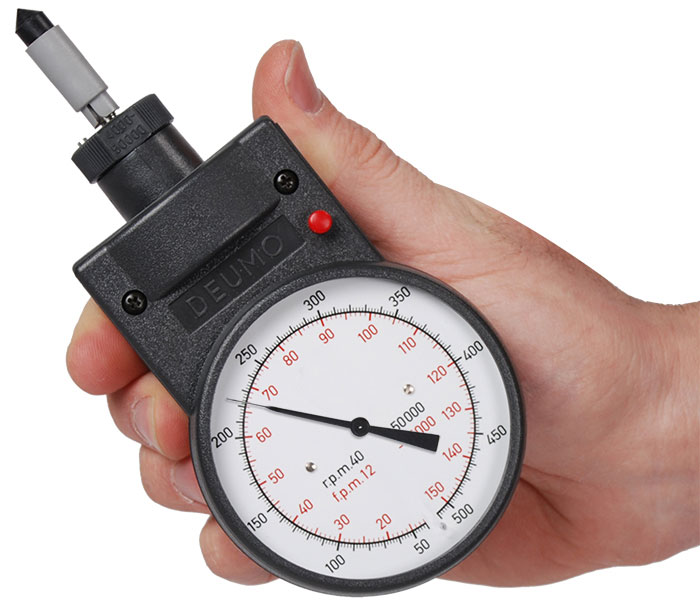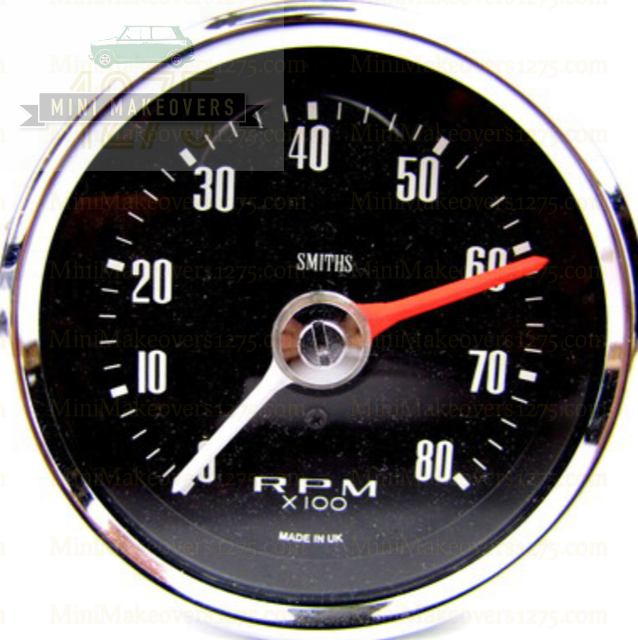Comprehensive Guide to Recognizing and Utilizing a Tachometer Efficiently
Comprehensive Guide to Recognizing and Utilizing a Tachometer Efficiently
Blog Article
The Relevance of a Tachometer in Monitoring Engine Speed and Performance in Automotive Applications
In the realm of automotive engineering, the tachometer stands as an essential tool in the chauffeur's collection, giving a direct window right into the inner workings of a vehicle's engine. Beyond its function as a mere gauge of changes per min (RPM), the tachometer acts as an essential device for lovers and specialists alike, using real-time understandings right into engine efficiency and wellness. Recognizing the value of this gadget surpasses surface-level monitorings, delving into the detailed connection between engine rate, power result, and general driving experience. As we discover the diverse duty of the tachometer in automotive applications, a deeper admiration for its influence on vehicle characteristics and effectiveness starts to arise.
Importance of Monitoring Engine RPM
Monitoring engine RPM, or transformations per min, is a critical aspect of vehicle upkeep and efficiency evaluation. Engine RPM straight associates with the rate at which the engine's crankshaft turns, suggesting exactly how swiftly the engine is running.
Moreover, checking engine RPM is vital for performance evaluation in auto racing and high-performance lorries. In recap, keeping track of engine RPM is not just vital for finding issues however additionally for enhancing engine performance in numerous vehicle applications.

Advantages of Real-Time Information
In vehicle applications, real-time data plays an important function in offering instant understandings into the performance and problem of the car. By continually keeping an eye on numerous criteria such as engine rate, temperature level, gas usage, and a lot more, real-time information offers various advantages that add to boosted efficiency and safety and security when traveling.
Furthermore, real-time data helps with performance optimization by supplying immediate responses on driving practices and engine performance. Motorists can adjust their actions in real-time based on this info to attain better gas economy and lengthen the lifespan of their lorry.

Additionally, real-time information plays an essential function in modern automobile diagnostics, enabling service technicians to swiftly diagnose and deal with breakdowns. This results in minimized downtime, reduced maintenance expenses, and inevitably, enhanced total car dependability and long life (tachometer). By taking advantage of the power of real-time information, automotive stakeholders can make educated choices that positively affect both the efficiency and longevity of the car
Influence On Gear Shifts
Reliable gear changes in automobile applications significantly influence general efficiency and driving experience. The tachometer plays an essential function in enhancing gear shifts by supplying real-time engine rate information to the driver. When approaching the redline on the tachometer, it signifies the vehicle driver to upshift to prevent over-revving the engine and creating potential damage. On the other hand, downshifting at the right moment can help maintain the engine in its power band, making sure receptive velocity when required.
In addition, the tachometer aids in attaining smoother gear shifts, especially in manual transmissions. By keeping track of engine speed, motorists can execute gear changes at the optimum RPM variety, decreasing snagging movements and decreasing wear on the transmission elements. This precision in equipment changes not only improves driving comfort however also adds to sustain effectiveness.
Enhancing Fuel Performance
Provided the critical duty the tachometer plays in enhancing gear changes for performance and engine wellness, it straight adds to making best use of fuel efficiency in auto applications. By giving real-time comments on engine speed, the tachometer helps vehicle drivers in keeping one of the most efficient RPM array for fuel economy. When vehicle drivers constantly monitor the tachometer and readjust their driving behaviors appropriately, they can stay useful reference clear of unnecessary gas consumption triggered by over-revving or carrying the engine.
Moreover, the tachometer assists vehicle drivers determine one of the most fuel-efficient gear to be in at any type of provided minute, preventing the engine from functioning harder than required. This is specifically important throughout acceleration and cruising, where remaining in the right gear can dramatically impact fuel performance. Additionally, the tachometer can notify vehicle drivers to possible mechanical issues that might be negatively impacting gas economic situation, such as a slipping clutch or a blocked air filter. Finally, the tachometer functions as a useful device in boosting gas efficiency by promoting ideal driving routines and determining locations for renovation in the vehicle's performance.

Maximizing Engine Longevity
The tachometer's role in keeping track of engine speed and performance contributes in ensuring the long life of vehicle engines. By using the tachometer successfully, chauffeurs can enhance engine durability through conscious RPM administration. Regularly revving an engine too expensive can bring about extreme deterioration on vital elements, such as the pistons, valves, and bearings. Over time, this can cause reduced engine performance and possible malfunctions. Keeping track of the tachometer allows drivers to stay within the advised RPM variety for their car, avoiding unneeded stress on the engine and extending its check these guys out life-span.

Final Thought
To conclude, the tachometer plays a vital duty in keeping an eye on engine rate and performance in auto applications. By supplying real-time information on RPM, it enables reliable equipment changes, improved fuel effectiveness, and optimized engine durability. This device is necessary for preserving optimal engine efficiency and making sure the total functionality of an automobile.
Report this page